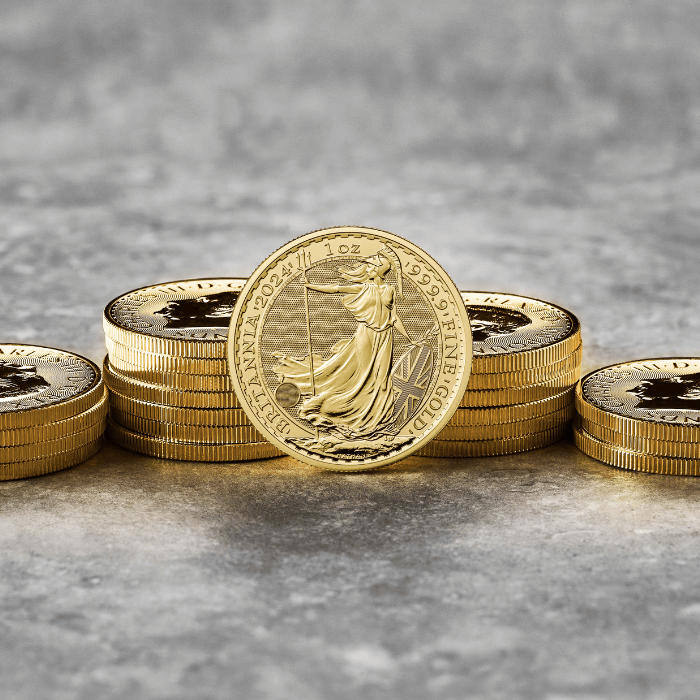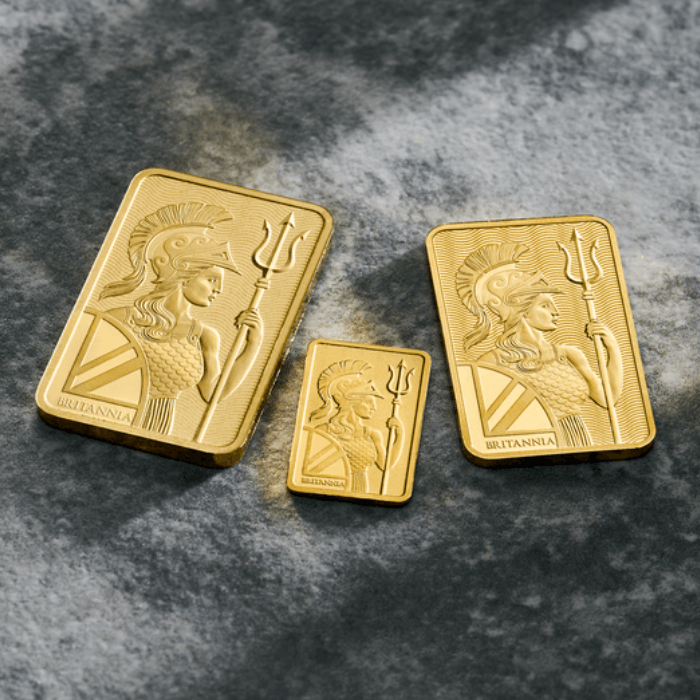St George and the Dragon, an Inspiring Story
Category: Invest
Dating from the twelfth century, the tale of St George and the dragon has been interpreted many times, with renowned artists finding inspiration in the legend. It has proved an enduring theme for coin designs, with Benedetto Pistrucci’s depiction on the reverse of The Sovereign the most celebrated.
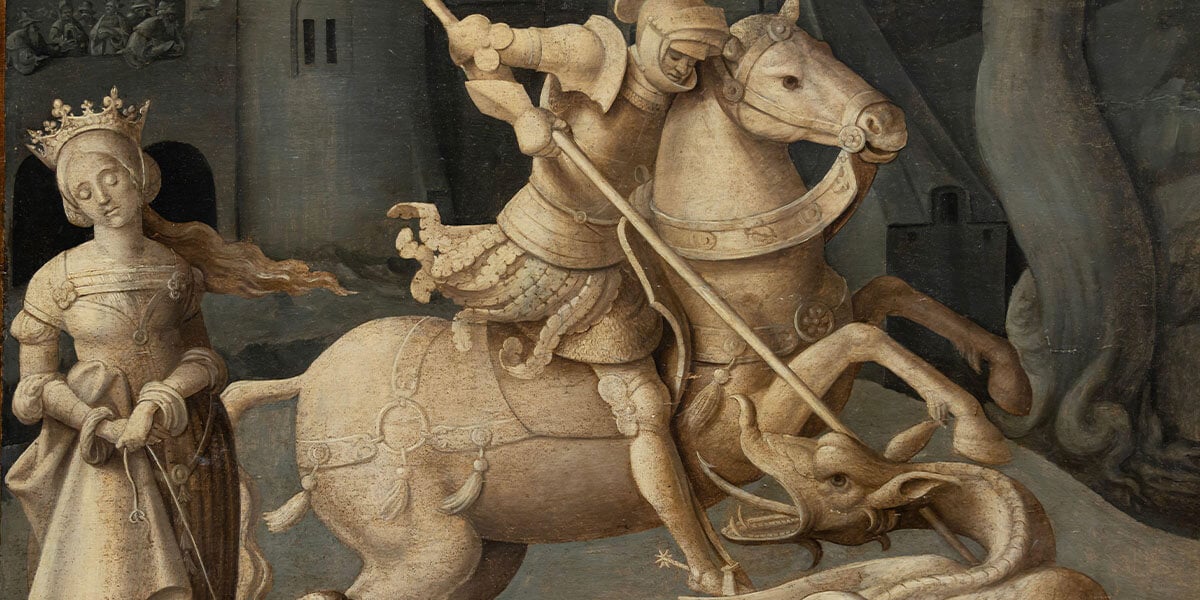
Patron Saint of England and Venice
In the United Kingdom, St George is widely known as the patron saint of England. That he is also the patron saint of many other parts of the world, including Ethiopia, Malta, Ukraine and Venice, is less well known in the UK. His legend has grown in detail and popularity over time, with different stories and aspects of his character adopted by various countries and cultures.
As the earliest records of St George date back more than a thousand years, it is unsurprising that the accounts of his life are vague and varied. There is evidence that George was venerated as a saint from the fifth century, but the person who inspired such devotion is less certain. In some accounts, St George is said to have been a Christian from Greece who later became a soldier in the Roman army. His refusal to denounce his faith led to his execution on 23 April, the date now observed as St George’s Day.
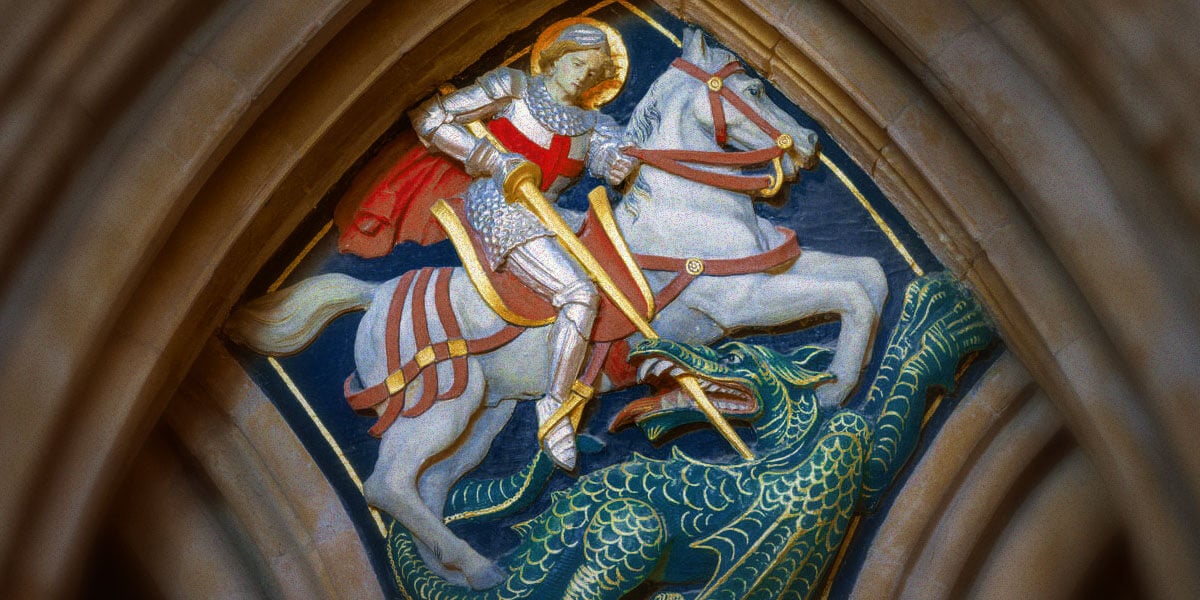
St George and the Dragon
The legend of St George is linked with a dragon in the twelfth century, many hundreds of years after George is said to have lived and been martyred. In this more familiar story, George is said to be a knight from Cappadocia who saves a young woman offered as a sacrifice to a fearsome dragon by the people of Silene in Libya. He wounds the beast in battle but only kills it after the terrorised locals agree to be baptised as Christians.
Iconic Artworks
The image of St George defeating the dragon has been depicted by some of the most notable artists in history, such as Raphael, Albrecht Dürer, Peter Paul Rubens and Salvador Dali. Among the masterpieces in The National Gallery collection are paintings of this scene by renaissance artists Paolo Uccello and Jacopo Tintoretto. George and the dragon has also appeared on UK commemorative and bullion coins and on Bank of England banknotes during the reigns of British monarchs, including that of Queen Elizabeth II.
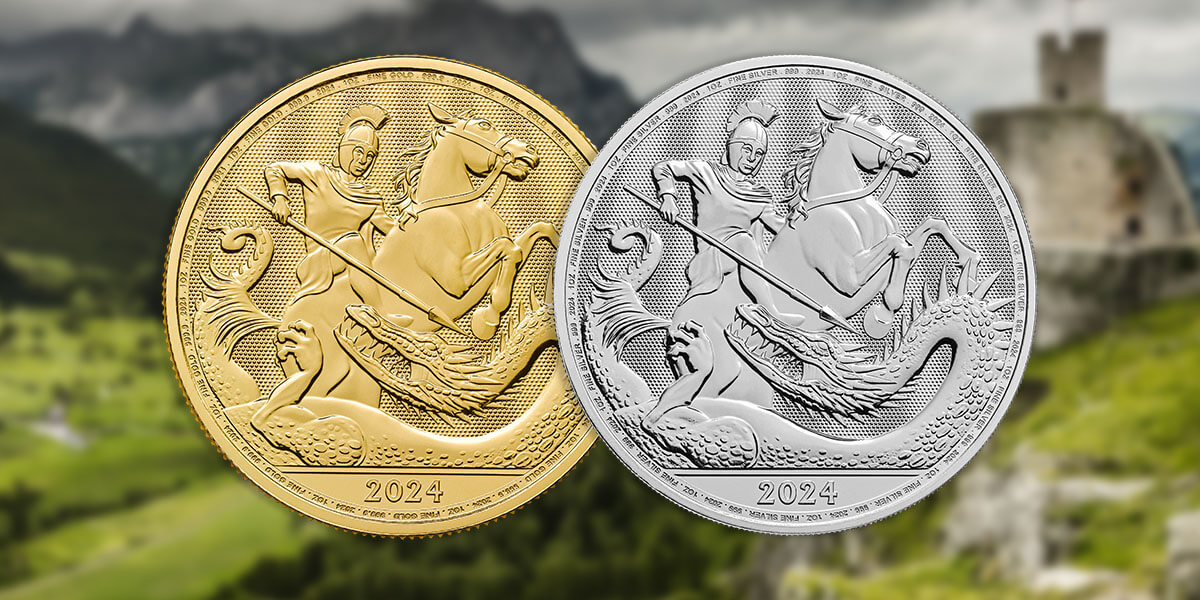
George and the Dragon on Coins
The story of George and the dragon has been chosen as a subject by The Royal Mint and its engravers many times, the battle between good and evil proving an attractive challenge. Saints in combat had appeared on coins since the introduction of the gold angel in the fifteenth century, so there was a tradition of depicting similar stories and themes. The rendition of this legendary tale to which all others are now compared was created by Benedetto Pistrucci for The Sovereign in 1817.
The Modern Sovereign
A not wholly reliable witness, Pistrucci claimed to have suggested the inclusion of the St George and the dragon design for The Sovereign when it returned to the coinage. According to this account, Pistrucci was commissioned to create a wax model of St George and the dragon in the classical style by Lady Spencer. On finishing this work, he suggested that his design be used for the new gold coinage being planned for production by The Royal Mint.
It is clear that William Wellesley Pole – Master of the Mint at the time – thought that the new Sovereign should be different in design to the guinea, its predecessor. This may be why a traditional, heraldic design was abandoned for the reverse and replaced with Pistrucci’s classically inspired George and the dragon.
Although the design attracted criticism when first seen, it became familiar and popular over time and is now regarded as a great achievement of numismatic art. When the design was updated and used for a crown of 1818, critic Dominique Vivant Denon declared it to be ‘the handsomest coin in Europe’.
Pistrucci’s design was clearly inspired by classical sculpture, and many commentators have noted the resemblance to the marble relief sculptures from the Parthenon in Greece. It seems likely that Pistrucci would have seen some of these masterful works (now known as the Elgin Marbles) as they were shown in London from 1807 by Lord Elgin.
In Pistrucci’s original conception, a muscular, barely clad St George is shown sitting on a horse that rears above the wounded dragon. He holds a broken lance in his hand, the pointed part of which is lodged in the beast’s side. The classical scene is circled by the garter bearing the motto: HONI SOIT QUI MAL Y PENSE, which translates as ‘Evil unto him who thinks evil unto it’.
Recent Versions of the Legend
Inspired by the many stylistic interpretations of the past, artists working today have created new depictions of this legendary tale. Notable artists and coinage designers including Paul Day, Timothy Noad and Jody Clark have all taken on the challenge of portraying the gallant knight slaying the dragon.

First Knight of Many
In 2024 George arrives again, this time on a bullion coin, available to investors and collectors in a range of gold and silver bullion editions, including a special one kilogramme silver bullion coin. Jody Clark’s dynamic reverse design is the first in a new series of bullion coins from The Royal Mint that will feature different visions of the St George and the dragon story.


